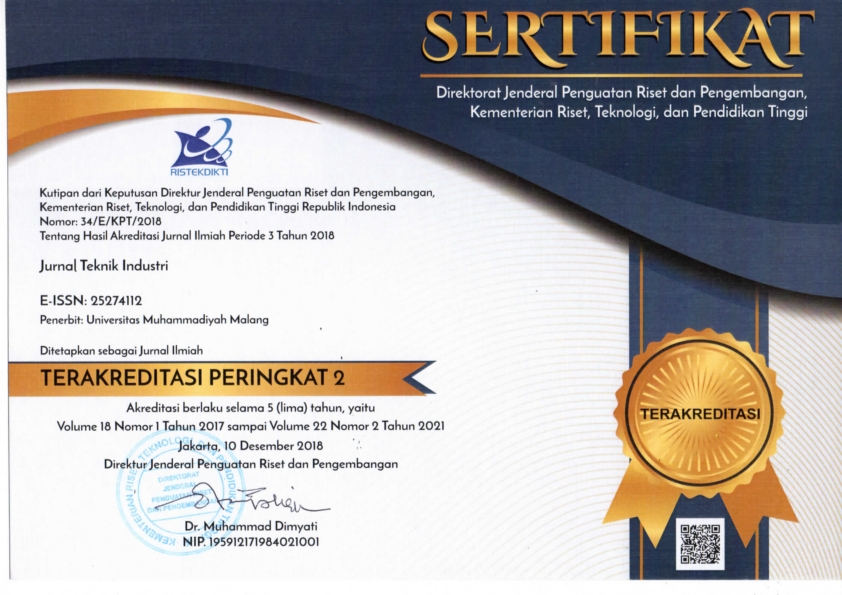Optimalisasi Proses Injection Moulding Pada Nanoalumina
DOI:
https://doi.org/10.22219/JTIUMM.Vol12.No1.16-19Keywords:
composite, nanoalumina, polypropyleneeAbstract
Composite is arranged from material with function as matrix that has weaker characteristic and material with filler function that has a function to transfer force from load in matrix. Plastic has more advantages than other materials;those are, able to be formed finely, light in weight, easy to get and the price is cheaper relatively. However, the problem is the filler that is involved here is still using fiberglass in which it will disturb human health. Alumina dust used here is Merck by particle size of > 0.063 mm, to get nano size then it would be mixed by Mixer Ball Mill for 50 hours and would be measured for dust grain size with particle size analyzer (PSA), then it is dehydrated in the oven by temperature of 80° C. The percentage of nano alumina for each are 1%, 2%, 3%, 4% ,5%,6% and 7%. Furthermore, it is mixed with PP plastic grain that is conducted by internal mixer to ensure the material distribution evenly, then it is poured in hoper in injection moulding machine that is operated in the temperature of 170° C and is injected in sample test moulding. The result of characterization of tensile strength, modulus elasticity and tensile show the decrement by addition of 2–3% of nano alumina in polypropylene matrix.
Downloads
Download data is not yet available.
Downloads
Published
03/30/2012
How to Cite
Jufri, M. (2012). Optimalisasi Proses Injection Moulding Pada Nanoalumina. Jurnal Teknik Industri, 12(1), 16–19. https://doi.org/10.22219/JTIUMM.Vol12.No1.16-19
Issue
Section
Article











